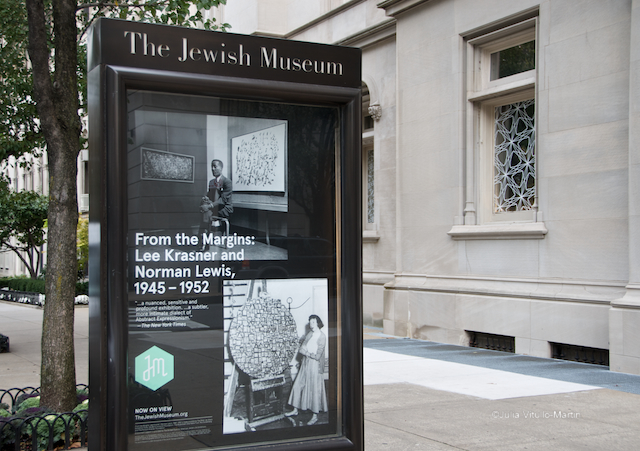
Pollock, de Kooning, Rothko, Kline. When we think of Abstract Expressionism—the New York School—we tend to think first: white, male, macho, huge, and American. AbEx helped establish New York as the art capital of the world, displacing Paris and signaling an entirely new post-World War II order. Now the Jewish Museum has mounted an exhibit—From the Margins: Lee Krasner, Norman Lewis, 1945-1952—that provokes a reconsideration, or perhaps a deepening, of what we think we know.
Norman Lewis (1909-1979), an African American whose parents emigrated from Bermuda, grew up in Harlem and studied drawing and commercial design in high school, before joining the merchant marine, notes the exhibit catalogue. Lee Krasner (1908-1984), born in Brooklyn to a Russian Jewish immigrant family, studied at Cooper Union and the National Academy of Design. Both were involved in the Federal Art Project of the Works Project Administration, Lewis as an artist, and Krasner supervising a section of its mural division.
Krasner is probably most famous as the wife of Jackson Pollock, whom she married in 1945. That very sentence stands as unfair, especially since she lived and painted for another 28 years after Pollock’s death in a 1956 car crash. Yet it is the ugly stereotyping of race and gender underlying and uniting this beautifully mounted exhibit that makes it necessary.
While Lewis and Krasner are increasingly recognized as important artists, says the catalogue, “both are sparsely represented in the criticism of the period.” Indeed, they were so thoroughly ignored by the superstar critics of the day—Clement Greenberg and Harold Rosenberg—that the museum grouped them under a special designation: Blind Spots. While the most famous AbEx canvases were “monumental, imposing statements to which universal significance or transcendent meanings” could be attached, Lewis and Krasner worked on a smaller, more meticulous scale.
They are united here in part because of a “magical synergy” observed by Norman Kleebatt, the curator of the Jewish Museum’s 2008 exhibit, Action/Abstraction: Pollock, de Kooning, and American Art, 1940-1976. Kleebatt felt that two paintings—Lewis’s Twilight Sounds (1947) and Krasner’s Untited (1948)—seemed to be speaking to one another in a common pictorial language.
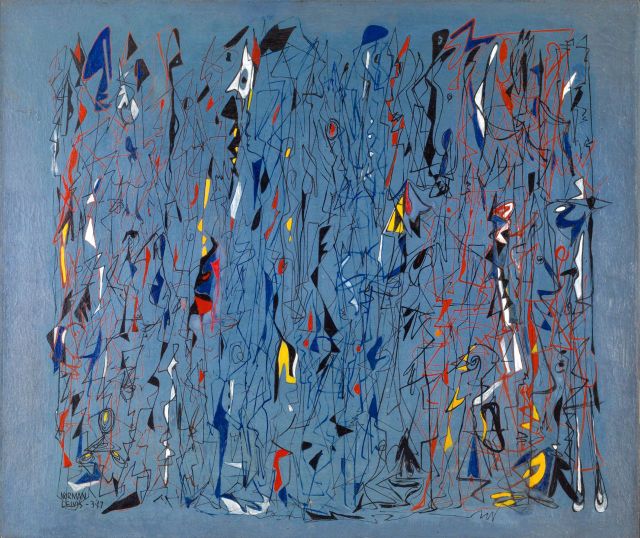 Norman Lewis’ Twilight Sounds
Norman Lewis’ Twilight Sounds
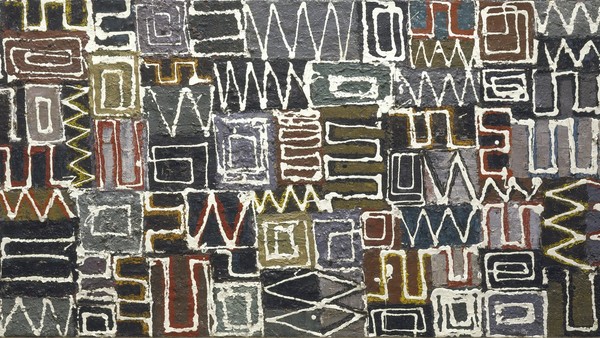 Lee Krasner’s Untitled
Lee Krasner’s Untitled
The exhibit’s first room offers a lovely, personal introduction through self-portraits of the artists. In his 1939 self-portrait, Lewis looks up and away, aloof and skeptical, eyes wide open and eyebrows raised. His shirt looks sharply starched, and his jacket well-cut. Beneath is a warning from his father, telling him not to become an artist, “which is a white man’s profession. A starving profession.”
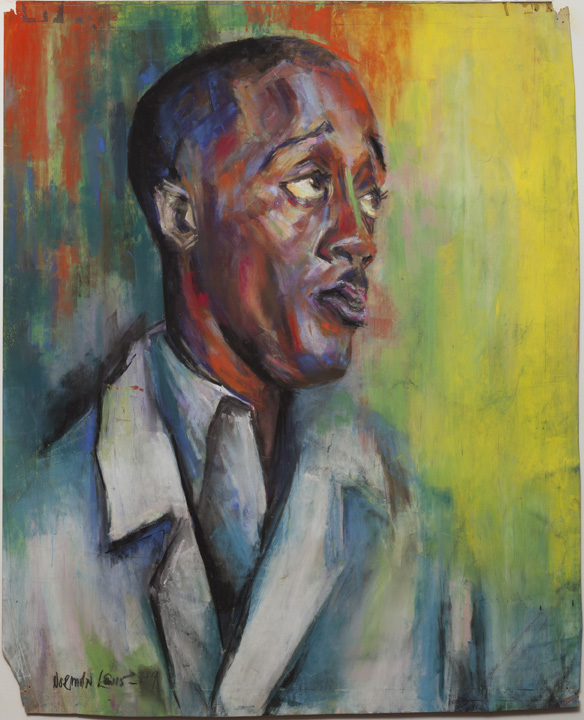
In her 1930 self-portrait, Krasner looks directly at the viewer, hostile and, like Lewis, aloof. She’s giving no quarter. She’s wearing the clothes of a working artist, a blue shirt and a heavy canvas apron. She’s holding her tools, brushes and a rag, in her right hand, while her left disappears into a painting she doesn’t show us. She’s not inviting anyone in. This was 15 years before she married Pollock, and she was clearly her own woman.
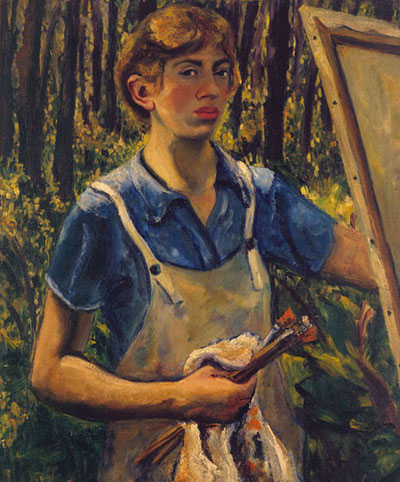
The core of the exhibit is in the second room, which features Krasner’s Little Image paintings with Lewis’s Little Figure paintings. The tight precision is unmistakable, especially in the context of the well-known photographs of Pollock painting in their spacious East Hampton barn. Krasner worked in their upstairs bedroom, and Lewis in his apartment on 125th Street. Almost surely real estate considerations played a role in the scale of their work. Pollock was able to paint big in a big space. Krasner and Lewis painted small in small spaces.
But our favorite part of the exhibit is the final room, in which guests can sit in Eames chairs and listen to a useful audio presentation that includes the actual voices of Lewis and Krasner. The conversations are disjointed, but that’s fine. We hear Lewis say “people are surprised I’m black. Another detour.” What does he mean? He doesn’t elaborate. We hear Krasner (sounding remarkably like Marcia Gay Harden, who picked up her harsh but interesting voice accurately, in Pollock) recall, “Mondrian said to me: who did that? You have a very strong inner rhythm—you must always hold that. Now that made sense to me, rather than the male or female bit in relation to painting.”
Some may object to the Jewish Museum’s categorizing painters by the “male or female bit” or by race, but this is an exhibit hewing to Mondrian’s more fundamental point. Krasner and Norman Lewis both had strong inner rhythms, and both held to them.
From the Margins runs until February 1, 2014
Hours: Mon, Tues, Fri, Sat, Sun, 11 AM-5:30 PM; Thurs,11 AM-8 PM; closed Wed
Where: The Jewish Museum, 1109 Fifth Avenue at 92nd Street
Phone: 212.423.3200
Julia Vitullo-Martin is a Senior Fellow at the Regional Plan Association. Get in touch with her @JuliaManhattan.





